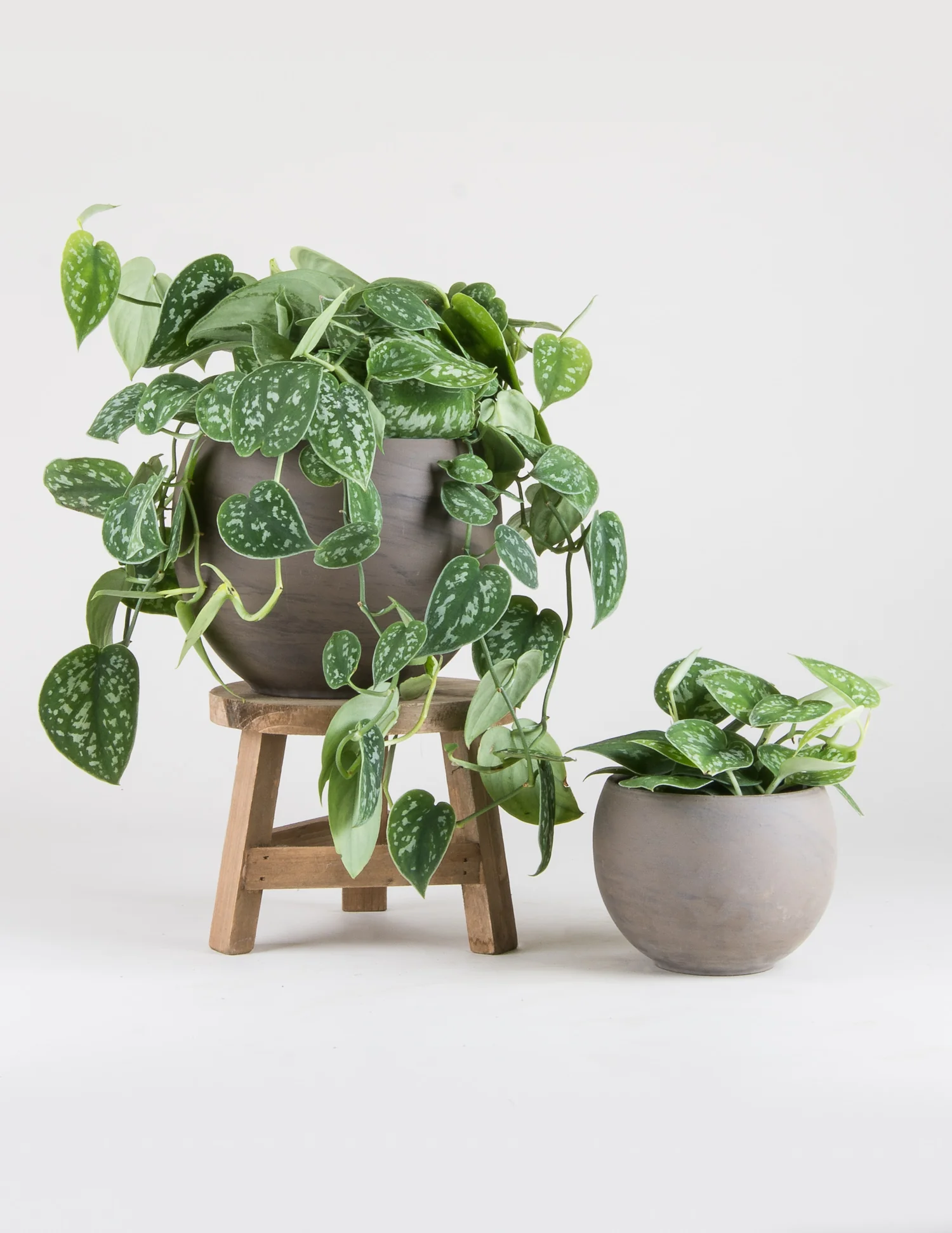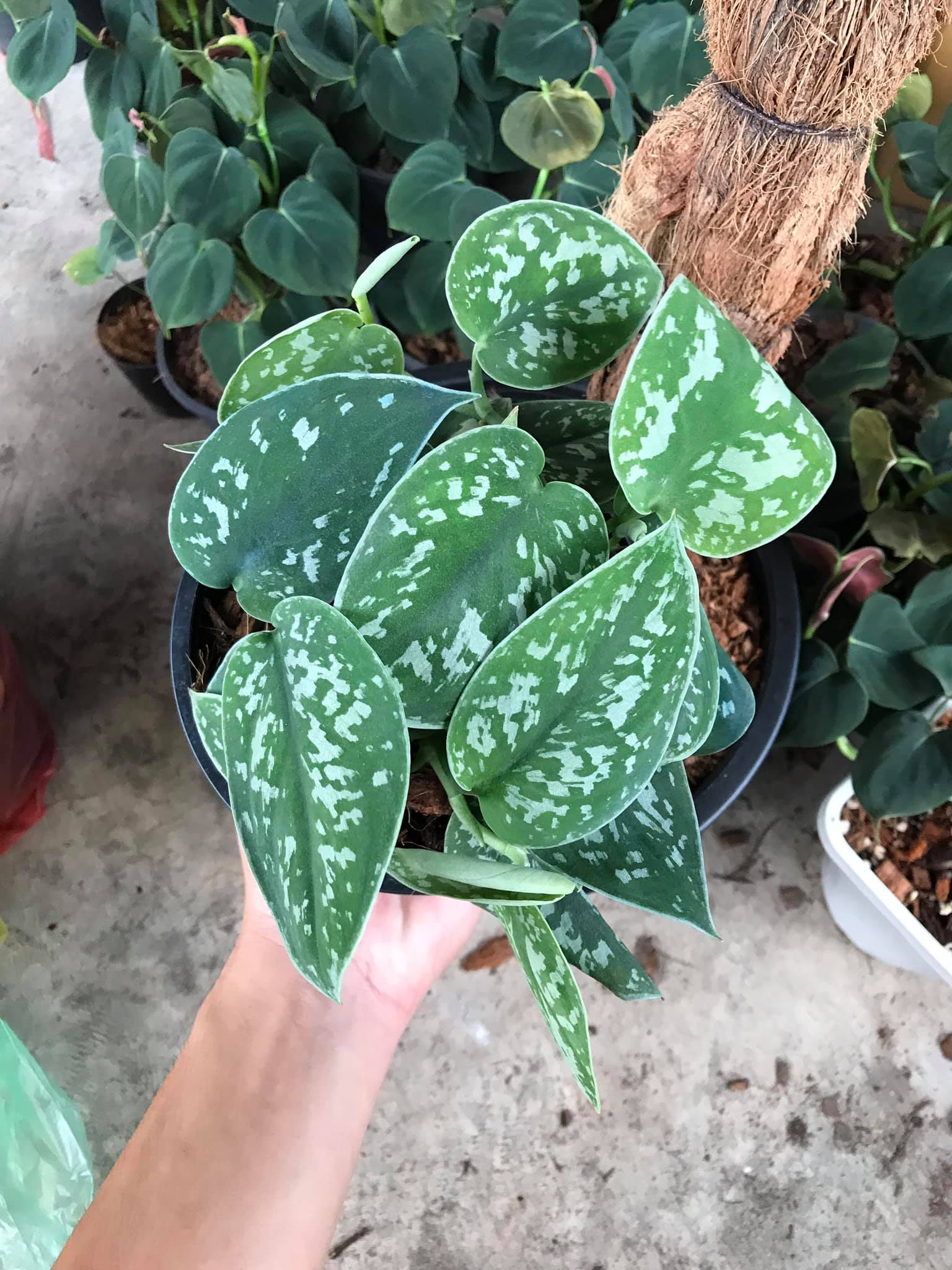Scindapsus argyraeus, also known as satin pothos or silver vine, is a gorgeous vining plant known for its silvery-green leaves. With its trailing stems and easy care requirements, scindapsus makes an excellent houseplant for both beginners and more experienced plant parents. If you’d like to add one of these beauties to your home, following these five easy steps will help you successfully grow scindapsus argyraeus.

Choose the Right Location
When deciding where to place your scindapsus argyraeus, there are two key factors to consider – light and temperature.
Light
Scindapsus enjoys bright, indirect light. Place it near an east, west, or north facing window where it will receive plenty of ambient brightness without getting several hours of direct sun exposure. Direct southern exposure may be too intense.
Signs your plant is getting too much light include bleached or yellowed leaves. Leaves that are small and far apart on the stems can indicate too little light. Adjust the location until the foliage is a lush, even green.
Temperature
This tropical vine thrives in average room temperatures between 60-80°F. Keep it away from hot and cold drafts from ventilation systems, windows and doors. Cooler temps below 50°F can cause leaf drop.
To understand more about the specific light requirements and how to provide the best conditions for your Scindapsus argyraeus, check out the detailed information in “Scindapsus 101: A Beginner’s Guide to Understanding and Growing“.
Use a Well-Draining Potting Mix
To allow excess moisture to freely drain away from the roots, scindapsus needs a potting mix that resists compaction and water-logging.
A quality potting soil blended specifically for indoor plants is best. Or make your own mix using equal parts:
- Peat moss or coco coir
- Perlite
- Compost
You can also add a bit of orchid bark for extra aeration. Prepare the container with drainage holes before filling it 1/3 full with moistened soil.
Water Thoroughly and Allow to Dry
Scindapsus prefers a thorough watering whenever the top inch or two of soil becomes dry to the touch. After watering, allow the excess to drain fully from the drainage holes before returning the pot to its saucer.
Then allow the soil to dry out again before repeating. This wet/dry cycle prevents overwatering.
In winter when growth slows, back off on watering frequency. The thicker leaves easily tolerate temporary drought. But do not allow the soil to stay bone dry for extended periods.
Watering Tips
- Feel the soil to gauge moisture, not just the top dressing
- Water until it flows from the drainage holes
- Dump out excess water in saucer after 15 minutes
- Allow soil to dry out between waterings
For more insights on the ideal watering techniques and how to avoid common mistakes, you can refer to the comprehensive guide in “How to Grow Scindapsus in 5 Easy Steps“.

Maintain Moderate Humidity
Native to tropical locales, scindapsus prefers 40-60% environmental humidity. Levels in most homes are lower during winter months when heating systems are in use.
Supplement by misting the leaves several times a week with room temperature purified water. Use a pebble tray, humidifier nearby, or place the pot on a wet gravel bed.
Too much moisture encourages leaf spot diseases. Ensure proper airflow so leaves dry swiftly after watering or misting.
Humidity Tips
- Misting provides temporary humidity boost
- Use pebble trays or humidifiers to raise humidity
- Ensure proper airflow to prevent fungal disease
- Less humidity needed in kitchens and bathrooms
Signs of insufficient humidity are brown leaf tips and margins. Excess moisture causes foliage yellowing and drop.
Fertilize Every 2-3 Months During Growth
While scindapsus grows well naturally, feeding a diluted liquid fertilizer occasionally provides nutrition for lush growth.
Use a balanced houseplant formula with equal parts nitrogen, phosphorous and potassium. Fertilize at half strength every 2-3 months in spring through summer when actively growing.
Discontinue feeding over winter when plant processes and growth slow down. Flush the soil every few months to prevent salt accumulation from fertilizer.
Fertilizing Tips
- Use balanced fertilizer diluted to half strength
- Fertilize every 2-3 months from spring to summer
- No feeding needed in fall and winter months
- Flush soil every 3 months to remove salts
If leaves develop dry, brown tips after fertilizing, the dosage was too strong. Flush soil to remove excess salts.
To learn about the appropriate fertilization schedule and the types of fertilizers best suited for Scindapsus, explore the recommendations in “Are you growing scindapsus at home? Find out its 5 secret advantages!“.
Conclusion
With these five easy steps for proper care – ideal location, quick-draining soil, attentive watering, ample humidity and occasional feeding – you’re sure to succeed in growing lush, gorgeous scindapsus argyraeus.
This trailing beauty is well worth adding to your indoor plant collection. Just provide the basic conditions scindapsus prefers, and enjoy its silver-green vining foliage brightening your home for years to come.
FAQ
- What is Scindapsus Argyraeus?
- Scindapsus Argyraeus, commonly known as “Satin Pothos” or “Silver Vine,” is a species of flowering plant in the family Araceae. It is a popular houseplant known for its heart-shaped leaves that have a silvery sheen or variegation. This plant is often grown for its attractive foliage and ease of care.
- How do you care for Scindapsus Argyraeus?
- Scindapsus Argyraeus thrives in bright, indirect light but can tolerate low light conditions. It prefers well-draining soil and should be watered when the top inch of soil feels dry. Overwatering can lead to root rot, so it’s important to ensure the pot has good drainage. The plant also benefits from regular misting to maintain humidity.
- Can Scindapsus Argyraeus grow in low light?
- Yes, Scindapsus Argyraeus can grow in low light, making it an ideal plant for less sunny spaces. However, its growth may be slower, and the leaves might have less variegation in low light conditions. For optimal growth and leaf color, bright, indirect light is recommended.
- Is Scindapsus Argyraeus toxic to pets?
- Yes, Scindapsus Argyraeus is toxic to cats and dogs if ingested. It contains calcium oxalate crystals, which can cause oral irritation, drooling, vomiting, and difficulty swallowing if eaten. It’s important to keep this plant out of reach of pets.
- How do you propagate Scindapsus Argyraeus?
- Scindapsus Argyraeus can be easily propagated through stem cuttings. Cut a stem section with at least one node and a few leaves, and place it in water or moist soil. Roots will start to form within a few weeks. Once the roots are well-developed, the cutting can be transplanted into a pot with soil.

